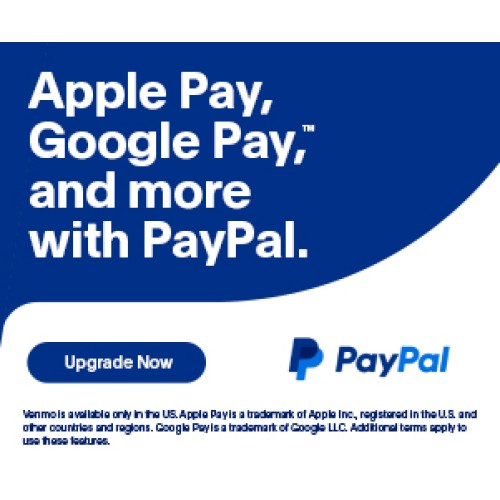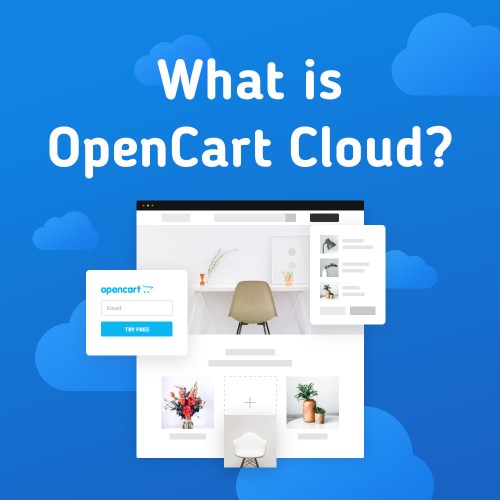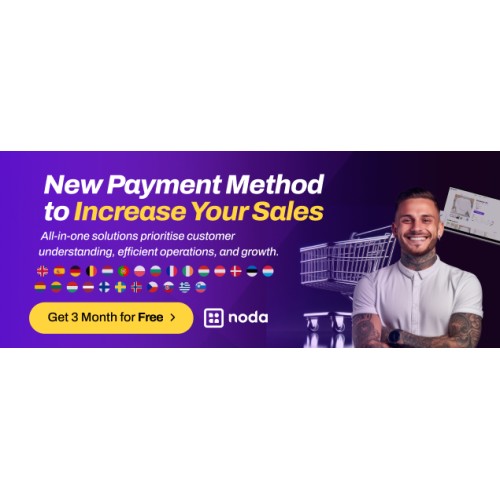A Forbes article predicts eCommerce growth of up to $6.913 trillion by 2024. As marketers, we all know this number will only increase from here.
So, if you are trying your hand at eCommerce, you are on the right path. You may or may not have a physical store, but you must have an eCommerce site if you are a B2C company.
In this article, I am listing 17+ effective ways to increase eCommerce sales. So, if you are starting now, check out these ideas. If you are already a couple of months or years old, you need to make these urgent changes.
These changes are in multiple arenas of your business, aiming at increasing e-commerce sales. I am dividing the arenas for better understanding.
Website
Inbound strategies
Outbound strategies
Let’s dive in.
[Website]
Imagine you’re a customer ready to buy a smartphone worth $300. You have added the product to your cart, and just when you are about to checkout, there comes a long form with uncountable boxes to fill.
Would you buy the product?
Probably not.
When it comes to e-commerce, everything boils down to user experience on the website. There are uncountable e-commerce websites in the market. If you don’t provide a good customer experience, somebody else will.
So, here’s a quick list of changes you can make to your website to increase e-commerce sales.
Make it Mobile Friendly
In 2023, mobile optimization of eCommerce sites is crucial to increase sales. The majority of consumers are mobile owners. Naturally, this increases the number of orders via mobile.
According to an article by Outerbox, more than 50% of all eCommerce purchases during the 2022 holiday season were conducted through mobile phones.
If you look at the history of giant eCommerce sites like Amazon and eBay, you will see mobile friendliness has played a major role in their growth.
This is why, to increase B2C sales, marketers must prioritize optimizing their sites for mobile users.
Optimize Your Catalog
Optimizing the catalog of an eCommerce website is putting forward the products that sell the most.
As an eCommerce marketer, you must keep track of how the products perform. You should check the selling history regularly and make a list of the products that sell the most. Now, whenever a site visitor looks for this type of product, the best-selling ones must show first.
Check the items that never sell or have the lowest selling records. Make a list of these products as well and remove them as soon as possible.
B2C industry experts think removing unwanted products from the catalog has boosted sales. So, if you are in dire need of positive sales results, try this proven method.
Additional Tip: Provide options for customer reviews.
" Keep in mind, you can always replace items that are not performing with new products. There are plenty of wholesale sites you can use to find new suppliers and top-selling products to add to your store. "
Provide Site Search
An eCommerce business is nothing but a virtual store. Just like a physical store, it matters where and how you shelf your products and how the customers are going to access them.
Imagine you are in a grocery shop trying to reach for an apple sitting on a high shelf. How long will you keep trying?
Not long, I guess. You will try a maximum of twice. On the third time, you will move on to some other shop.
The same thing goes for e-commerce sites. Only listing the products or displaying prices is not enough to increase sales. You must include a site search on your website to make it convenient for visitors. In case your customer doesn’t find a particular thing, they can search for it and find it.
Use Email finder software Tool to Build Email List
Email finder software collects email addresses of your website visitors via giveaways, discounts, newsletter pop-ups, slide-in forms, inline forms, spin-the-wheel pop-ups, etc., to make an email list.
Asking for a visitor’s email address without offering anything appears as a pushy move from the seller’s side. However, a simple “20% discount” or a giveaway coupon can make it all easier.
There are many list-building tools, such as Sleeknote, Optinmonster, GetSiteControl, etc., that have the easy drag-and-drop feature. With such easy tools, even a new eCommerce store owner can create their choice of pop-ups/forms and create a list of their email subscribers.
Additional Tip: Trigger the pop-ups and forms after the visitor has spent a certain amount of time on your site or scrolled to a particular page.
Having a pop-up asking you to take action the second you have opened the site is the biggest mistake eCommerce sites make. Let the visitor have some time to look around and decide what they like.
This is why opt-in checkout boxes work so well.
Offer Guest Checkout
Sure, opt-in checkout boxes work well. But, imagine someone is trying to buy only one item, and they are in HURRY.
Do they want to go through the pain of filling out forms for one product?
Most probably, they don’t.
If you see a decline in sales, it’s probably because of the not-so-smooth checkout process. For better sales, an online business must allow guest checkout for fewer products.
You can check Mad Hippie and Walmart to see how guest checkouts work.
Use IP Geolocation to Set Pricing
With globalization and blah…blah…blah, you know that everything online is available to everyone from all over the world. You might be trying to sell to Aussies, but Canadians are also interested in what you sell.
So, now, you obviously want your Canadian customers as well. But, the taxes are widely different in both countries. Selling your products at the same pricing might not be a profitable option for you as a seller.
This is where the IP Geolocation thingy comes in. It simply means that the pricing will be different based on the location of your customer.
Create Urgency
Listing products and optimizing your catalogs are excellent steps to increase sales in your online store. But, creating a sense of urgency is just the cherry on top.
You can do that in many ways but the two most popular ways are
Providing limited-time discount
Showing less stock
A simple text “Only 2 left in stock” in yellow letters is just the right trick to give your customers the extra push. Also, a little banner on the homepage saying there are only 2 hours left of the holiday sale can work too.
Try different methods. See what works best for your customer base. For instance, this “Only 2 left in stock” will not work for big-budget stuff like pianos, costly furniture, etc.
Integrate with an Upselling App
A customer is buying a 200-gram packet of noodles for $5. They have added it to the shopping cart and are about to checkout, but they see another offer: the 400-gram packet is just $2 extra.
What will the customer go for? Take a wild guess.
The majority of customers will go for the bigger packet. For a discount like this, some buyers are even ready to extend their budget.
So, if you aren’t seeing any increase in your online store sales, it’s time to try upselling your products.
All you need to do is set triggers with these kinds of offers and discounts while your customers are trying to check out.
You can also do the same by displaying by-products with discounted pricing. For example, a customer is buying a pair of shoes. If the pop-up shows a discounted, good pair of socks, most buyers will go for it.
Keep Multiple Payment Options
There is no better way to kill sales than keeping only one or two payment options. Imagine a young teenager is trying to buy a product from your eCommerce business, and you have only a debit/credit card payment mode.
In such scenarios, the customer is more likely to go for your competitors. This is why it's extremely important to keep multiple payment options.
Some of the most popular payment modes in eCommerce websites are:
Paypal
Credit cards
Debit cards
Google Pay
Apple Pay
Amazon Pay
American Express
Additional tip: If your eCommerce business offers subscriptions, it's crucial to have a robust billing system that can handle recurring payments seamlessly. Automatic billing solutions like Chargebee can simplify the process and help ensure timely payments, minimizing the risk of subscription cancellations.
[Inbound Strategies]
Inbound marketing strategies are marketing steps that make the customers come to you—the brand/seller, not the other way.
Around 75% of marketers in 2022 believe inbound strategies are more effective than outbound strategies like cold calling and emailing. These strategies are cheaper to implement and work for the long run.
Here are 6 unavoidable inbound strategies that every eCommerce brand should try.
Improve Technical SEO
The first inbound tactic is obviously SEO—Search Engine Optimization. You want your website to be optimized with keywords in such a way that whenever your potential customer Googles something, your product pops in on top.
Here are 3 ways that you can improve the technical SEO of your online store.
1. Create a Separate Page for Every Product
Yep, create a separate page for every product you are selling. Whenever a customer clicks on a product, it should open to a well-designed, neatly created page along with product descriptions and images.
2. Use Keyword in the Product URL
The next step after creating a page is to keep a neat URL. The URL of the product must have the keyword.
For instance, your customer is looking for an embroidered short dress. If the URL of your product page contains these words, Google is more likely to show your product when your customer clicks on the search button.
3. Use Alt-Text for the Images
Another excellent way to ace technical SEO is to insert ALT-Text for the image. Putting the keywords (that your customer can search with) in the Alt-text will pull up the image of your products in the Google image search.
It’s one of the most effective ways to increase sales for B2C companies.
Improve Local SEO
Local SEO is optimizing your website in such a way that it helps your website be more visible in local search results on Google’s organic search results.
If your business has a location or can serve people from a geographic area, then you must try improving local SEO. It will increase your sales drastically.
Write Blogs
Creating blogs or blogging has always been the most effective inbound strategy for any type of business. I am not talking about giants like Amazon. Amazon is almost like Google when it comes to eCommerce games, so their strategy works on a different level.
But, for smaller or midsize brands, creating value-adding, problem-solving content can be fruitful in many ways.
For instance, if you are selling tennis shoes, you can create articles like “How to Choose Tennis Shoes” or “Things to Look for Before Buying Tennis Shoes”.
So, whenever potential customers Google search these keywords, your content comes up. A well-written article can empower potential buyers and build trust between the brand and the customer, eventually increasing sales.
However, it's important to remember that creating unique content is crucial for the success of your blogging strategy. As plagiarism can harm your reputation and credibility, leading to a loss of potential customers. Therefore, make sure to use a reliable plagiarism checker to ensure the uniqueness of your blog before its publication. This help you avoid the consequences of plagiarism by finding the plagiarized text and removing it with different techniques (quotation, citation, or paraphrasing).
Additional Tip: Don’t forget to do on-page SEO before uploading the article on the web.
Create Video Content
In 2023, everybody knows that there’s nothing that can hook an audience base like video content.
Don’t think twice when it comes to starting video content. It’s the future, obviously. As a marketer, you must prepare to make your brand ready for the future as well.
Be it YouTube, TikTok, or Insta reels, every brand must have separate video content to engage their audience base. It should be entertaining, value-adding, ethical, and, most importantly, relevant to your audience.
Create Social Media Presence
Social media presence is everything in 2023. It’s the social proof that every seller needs desperately. Every body uses social media scheduler to make their online presence worthy. It is also the best way to create brand awareness and keep your existing loyal customers in the loop.
Never think of yourself just as an eCommerce site. Remember, your business is a brand regardless of its size and revenue.
If you want to thrive in this competitive market, start building your brand image. Here’s a quick list of benefits of social media presence:
Publicity
Provides social proof
Increase customer engagement
Entertain the customer base with relevant content
Understand your audience
Get customer feedback with direct product reviews
Promote new products
Build customer-brand relationship
Build a loyal customer base
Reach target customers
Create a social network
Try Influencer Marketing
Did you know influencer marketing is going to be $21.1 billion this year?
Yep, that’s unbelievable. It’s huge but there’s a reason why it’s happening.
Because influencers have your target audience.
For the products that you are struggling to sell, an influencer can make them out-of-stock in just a couple of hours. All you need to do is craft a killer influencer outreach email and send it across.
Once you hear from the influencer (or their manager), collaborate with them to come up with a good video idea/ad or any other way. Initially, influencer marketing can seem expensive. But, remember that it’s not just about one-time sales. It’s about spreading the word about your brand.
When an influencer tries your product or talks about it, there are millions who are hearing about your eCommerce store. So, even if they are not buying anything right now, they might work in the long run.
So, the bottom line is—to try influencer marketing to boost sales for your eCommerce website.
[Outbound Strategies]
While inbound strategies are great, they take a long time to work. Meanwhile, you can try Outbound strategies to boost your eCommerce sales.
Spend on Facebook Ads
If you are struggling with sales, try Facebook ads. It’s one of the most effective outbound tactics for B2C companies.
After all, Facebook ads can reach almost 33.3% of the global population, which is 2.08 billion consumers. If done rightly, this can pump up your revenue dramatically.
But, don’t spend all your funds in the first go. Start with a little. Again, it’s not always about the platform. Sometimes, it can be the ad copy, the design, or the content as well.
So, always begin with a small budget. Try various types of ads. See which one is better for your brand and then spend more.
Try Cold Email Marketing
Yeah, good old email still works. Even Facebook (Meta) can go down, but emails never do that. Plus, 73% of millennials prefer businesses approach them via email.
So, if you are trying to increase sales, cold email marketing may be a good option for you. All you need to do is subscribe to AI-based tools like Smartlead and Lemlist and automate email campaigns. Many of these tools create the email as well if you provide prompts.
Create the email sequence with the help of email sequence software, set the sending time, and you are done.
Additional Tip: Send almost 10 to 12 follow-ups with healthy interval time to see more results. Also, don’t send emails to a prospect if they ask you to stop. Don't forget to add an “unsubscription” button as well.
Google Ads
If you have a decent website and an easy checkout process, simple Google ads can get you significant revenue.
It’s not the ideal way of generating leads. Most industry experts even speak against it. But, if you are new and you desperately need sales, you can try.
According to research, Google ads comprise 18% of total eCommerce revenue.
Now, 18% is really something. If you haven’t tried Google ads yet, it’s time that you do. But, never spend a huge amount in the first go itself. Always begin with a small budget. If it works for you, only then go for a significant investment.
Also, Google ads aren't ideal for niche businesses like clothes made out of bamboo or honey produced in a remote Indian village. If you think your brand is too unique, you should probably stay away from Google ads.
Pay-per-click
Pay-per-click is an advertising method that is used to drive traffic to websites. It’s called pay-per-click because you, the advertiser, pay only for the number of clicks they get.
It’s an industry-approved outbound tactic for eCommerce websites. It is aimed at people who have actively looked for the products you are selling. So, if you think Google ads are too costly for you, try pay-per-click.
Use AI-based Tools
Using AI-based automation tools is the most popular trend in 2023. If you are still avoiding AI software, it’s your loss. For better workflow, you must try AI tools asap.
Here’s a list of automated software that every eCommerce site should try.
TUP e-Commerce
Zyro
WixADI
Persado
Albert
Smartlead
Watson Assistant
Final Thoughts!
E-Commerce is a big game. It’s the future market, and that makes it super competitive. You need to up your game with a really convenient, good-looking, easy-to-scroll website.
To increase sales, try the above inbound and outbound strategies. If the above information is too overwhelming for you, try Google ads for outbound and social media platforms for inbound.
Start with as small as $10 per day for Google ads. Test the waters before diving in. Don’t forget to create a sales funnel before starting with ads.
With that, here’s the end of this article. All the best for your future ventures.




Login and write down your comment.
Login my OpenCart Account